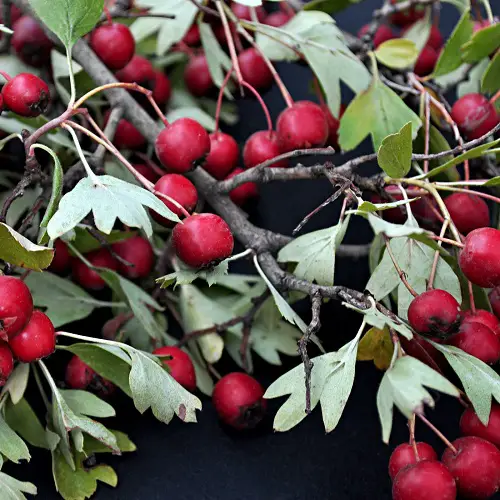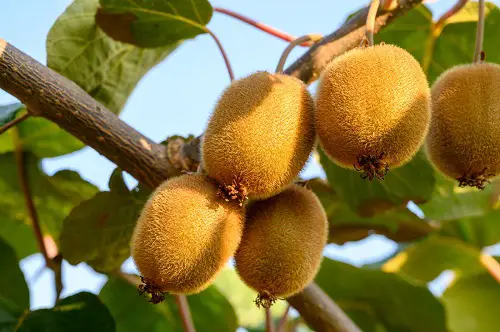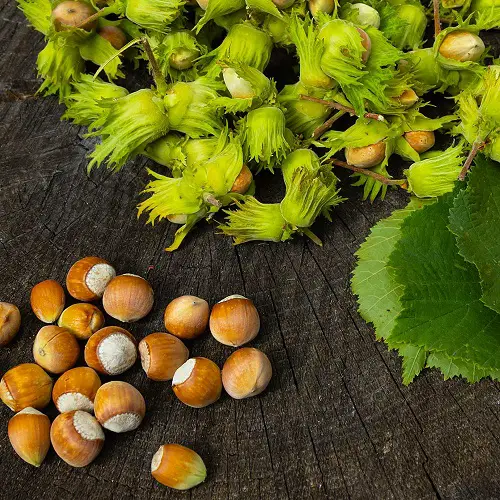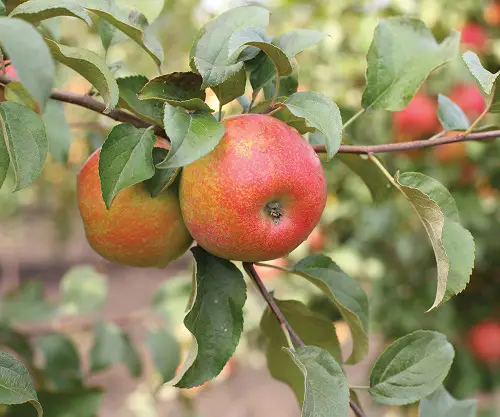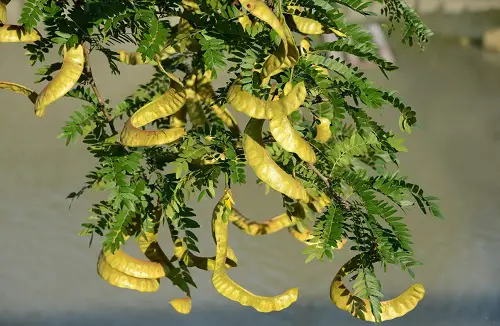Who knew there were so many Names of Fruits That Start With H? We’ve compiled a list of all of them for you!
How many of these Fruits That Start With H can you name? Read on and test your knowledge.
Fruits That Start With H
1. Habanero Pepper

Botanical Name: Capsicum chinense
USDA Zones: 9-11
Habanero peppers are known for their intense heat and a bit of fruity undertone. They are native to the Amazon forest and rank between 100,000 and 350,000 Scoville Heat Units (SHU).
2. Hachiya Persimmon

Botanical Name: Diospyros kaki ‘Hachiya’
USDA Zones: 7-10
Hachiya Persimmon has a high level of tannins that make it unpleasant to eat if it’s not ripe. You can place these in a paper bag with apples or bananas–they release ethylene gas, and it will ripen faster.
3. Hackberry
Botanical Name: Celtis spp.
USDA Zones: 3-9
This fruit that starts with H has small, pea-sized berries that birds and animals love to eat. You can eat them as well, but they have a bland taste.
4. Hairless Rambutan
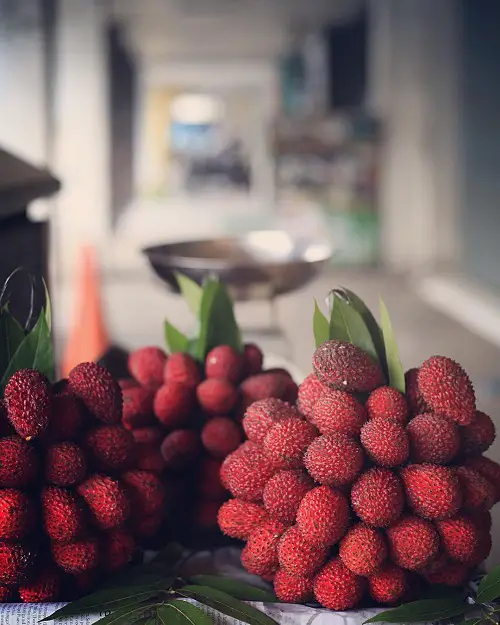
Botanical Name: Nephelium lappaceum
USDA Zones: 10-11
Hairless Rambutans are just like regular rambutans, but they don’t have the spiky protrusions. They’re hard to come by in the US but are common in Southeast Asia.
5. Hairy Kiwifruit
Botanical Name: Actinidia arguta
USDA Zones: 4-9
Hairy Kiwifruit is native to China and has bright green flesh and a tarty flower. On the outside, the skin is fuzzy brown and has trichomes (hair).
6. Hala Fruit
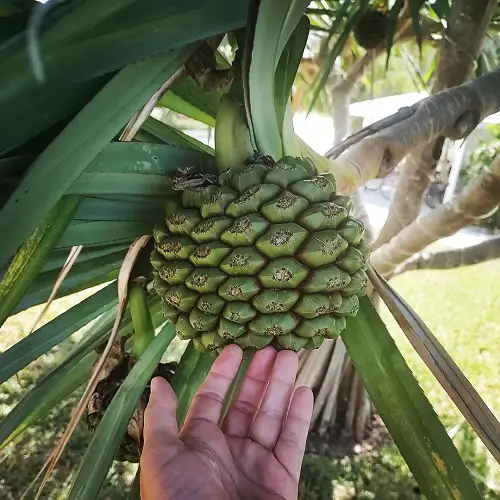
Botanical Name: Pandanus tectorius
USDA Zones: 10-11
Hala fruit is really large and grows on the Hala tree. It has white-yellow flesh and is sweet in flavor, just like a pineapple. You can eat it raw or even boil it.
7. Heliconia Fruit
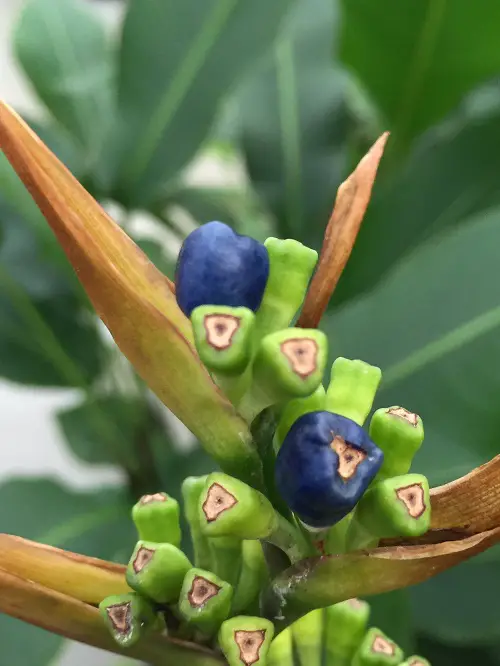
Botanical Name: Heliconia spp
USDA Zones: 9-11
Our journey through the letter H wouldn’t be complete without the Heliconia Fruit. Some Heliconias have tiny bracts or fruits that are used in traditional dishes as they are edible.
8. Hall Crabapple
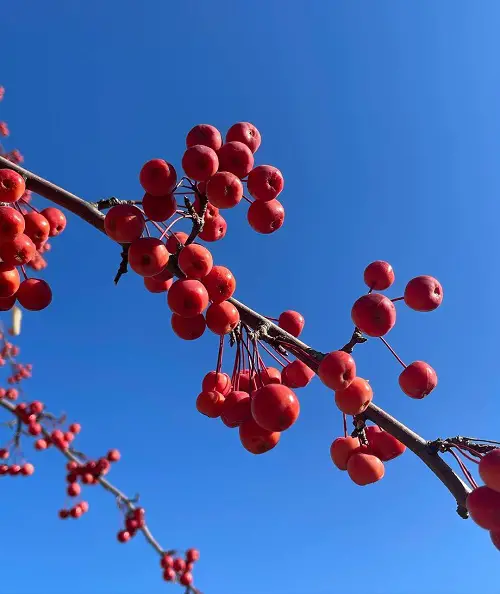
Botanical Name: Malus ‘Halliana’
USDA Zones: 4-8
Hall Crabapples are beautiful trees full of pink flowers. They also have small, red crabapples that ripen in the fall.
9. Hardy Kiwi
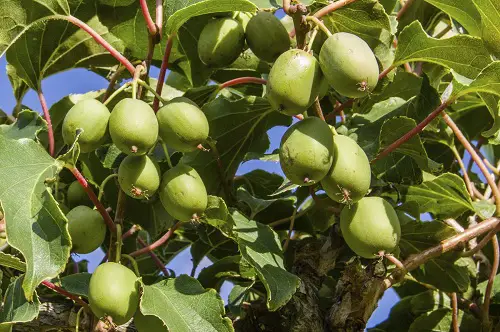
Botanical Name: Actinidia arguta
USDA Zones: 4-9
The Hardy Kiwi is just like the Hairy Kiwi but without the hair. The skin of this fruit with H is smooth, and you can eat it without peeling anything. They’re sweet and tangy.
10. Haruka
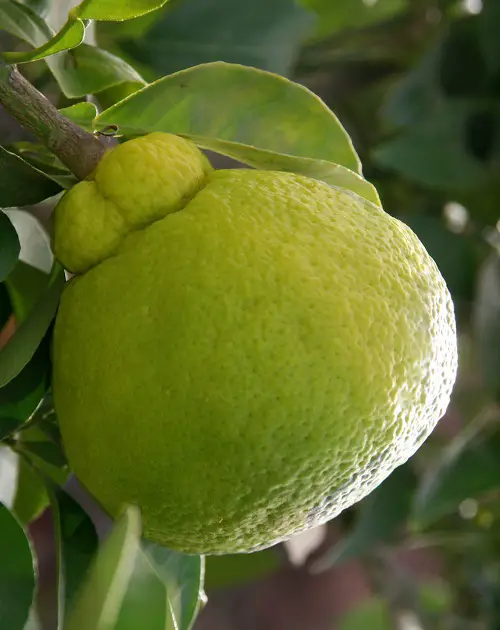
Botanical Name: Citrus tamurana × natsudaidai
USDA Zones: 4-8
Harukas come from Japan and Korea and are a sweet hybrid citrus. They were developed in the Fukuoka Prefecture in late 20th century Japan and look like lemons.
11. Hassaku Orange

Botanical Name: Citrus hassaku
USDA Zones: 9-11
Another fruit starting with H is the Hassaku Orange. It is also a Japanese citrus hybrid and is really sweet and tarty. It’s harvested between December and February.
12. Hawthorn Berry
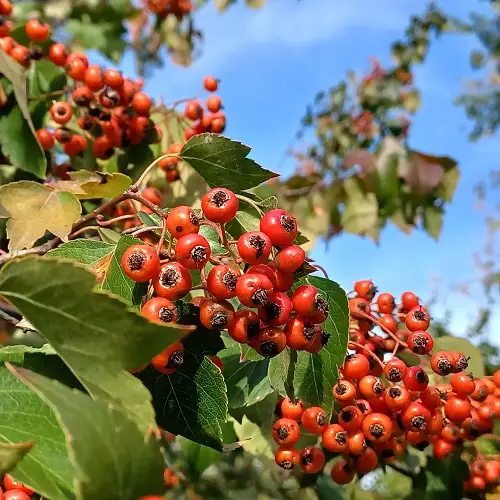
Botanical Name: Crataegus oxyacantha
USDA Zones: 4-11
The Hawthorn Berry is great if you’re in the mood for something a bit tart. They’re really small and can be red, orange, and even purple in color.
13. Hawaiian Mountain Apple
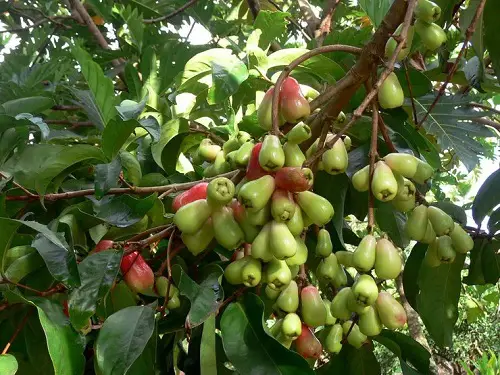
Botanical Name: Syzygium malaccense
USDA Zones: 10-11
Hawaiian Mountain Apples are also called Ohi’a ‘ai by the Hawaiian locals and have a delicate, pear-like flavor. Their flesh is crisp and juicy.
14. Hawaiian Raspberry
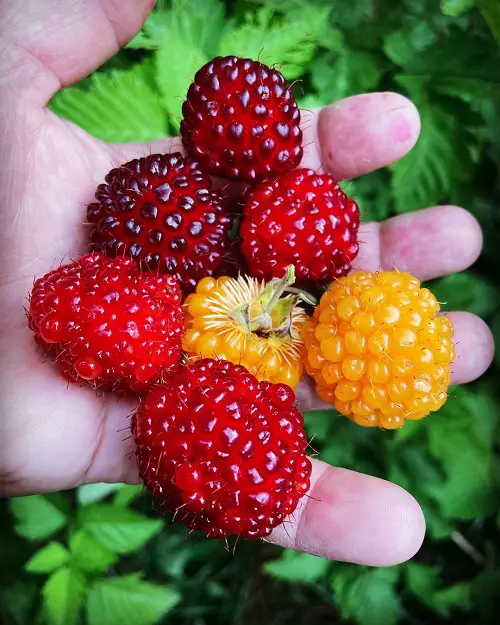
Botanical Name: Rubus macraei
USDA Zones: 9-11
Hawaiian Raspberries are endemic to Hawaii and are not found anywhere else in the world. These fruits are edible but not eaten because they are really sour and bitter.
15. Hazelnut
Botanical Name: Corylus spp.
USDA Zones: 4-9
Hazelnuts are not fruits that start with H but are technically nuts. These nuts are encased in a husk and are rich in protein, fiber, and healthy fats.
16. Hebesu
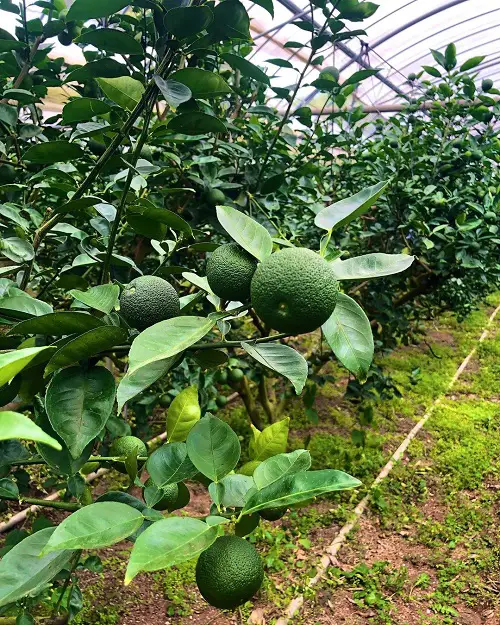
Botanical Name: Ziziphus jujuba var. inermis
USDA Zones: 6-10
The Hebesu fruit is found in the Miyazaki Prefecture in Japan and is rich green in color. It is slightly oblong and has a tart-acidic flavor with a hint of sweetness.
17. Heirloom Tomato
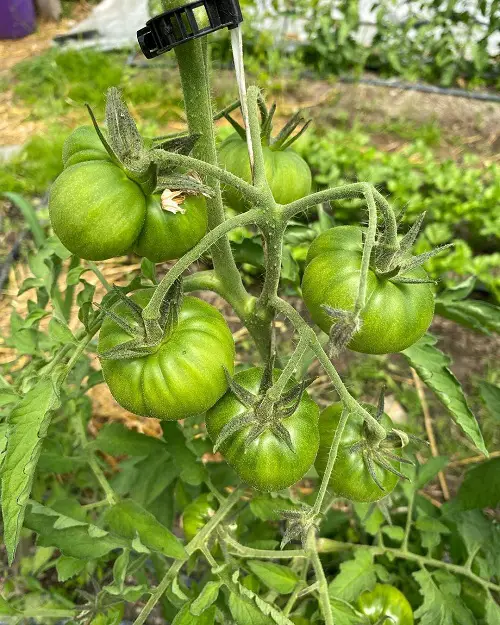
Botanical Name: Solanum lycopersicum
USDA Zones: 3-9
You can also find many Heirloom Tomatoes in all shapes, sizes, colors, and flavors. Some good ones to try are Brandywine, Cherokee Purple, Black Krim, and Green Zebra.
18. Hickory Nut
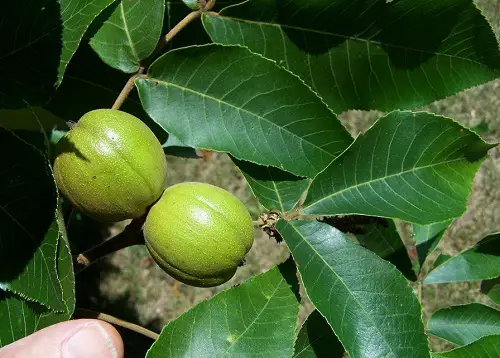
Botanical Name: Carya spp.
USDA Zones: 4-8
Hickory Nuts are actually edible seeds of Hickory trees. These nuts are a valuable food source for the wildlife and also enjoy by people.
19. Highbush Blueberry
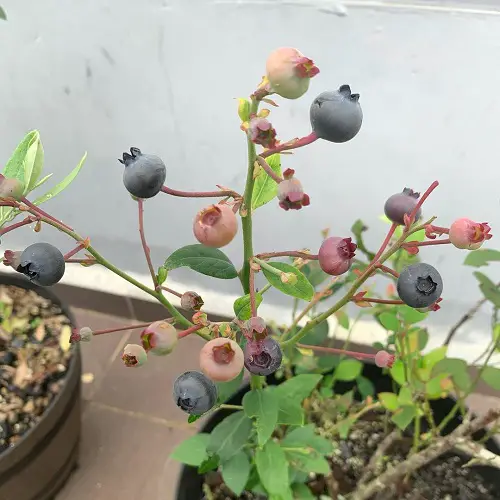
Botanical Name: Vaccinium corymbosum
USDA Zones: 3-7
Highbush Blueberries come from perennial shrubs native to eastern North America. The blueberries you usually find in grocery stores are Highbush Blueberries.
20. Himsagar Mango
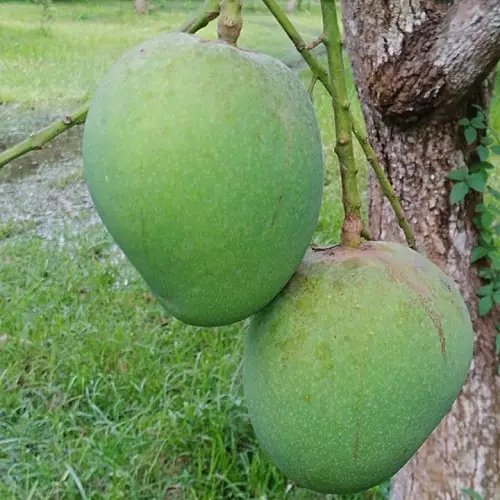
Botanical Name: Mangifera indica ‘Himsagar’
USDA Zones: 10-12
Himsagar Mangoes are found in Bangladesh and India and are one of the best around the world. These H fruits are cherished because they do not have any fiber.
21. Hog Plum
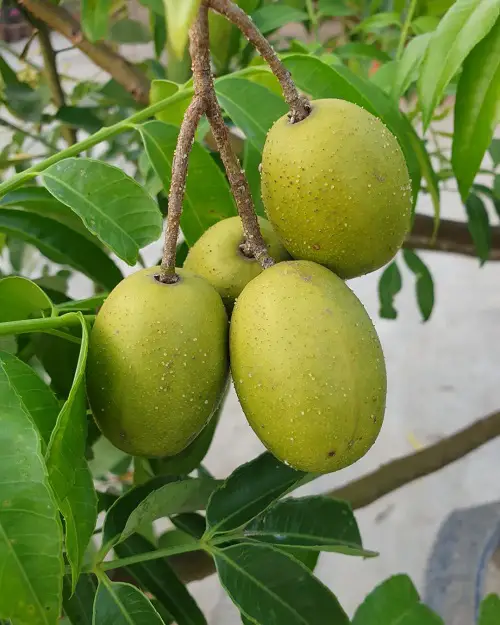
Botanical Name: Spondias mombin
USDA Zones: 10-12
Hog Plums are native to the tropical Americas and have a tarty and acidic flavor. They’re used in jellies, jams, and chutneys as well.
22. Hollyleaf Cherry

Botanical Name: Prunus ilicifolia
USDA Zones: 7-11
Hollyleaf Cherry fruits grow on native evergreen shrubs and have small, one-inch red-purple drupes that are loved by wildlife. These fruits are edible but rather tart.
23. Honeyberry
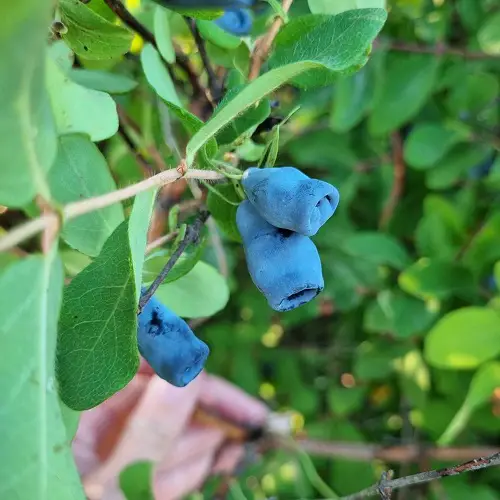
Botanical Name: Lonicera caerulea
USDA Zones: 2-9
Honeyberry shrubs are known for their sweet and tart berries, which are high in antioxidants. They’re really easy to grow and are pest- and disease-resistant.
24. Honeycrisp Apple
Botanical Name: Malus domestica ‘Honeycrisp’
USDA Zones: 3-8
Honeycrisp apples were developed at the University of Minnesota in the 1970s. They are exceptionally crisp along with juicy and are rich in vitamin C and fiber.
25. Honeydew Melon
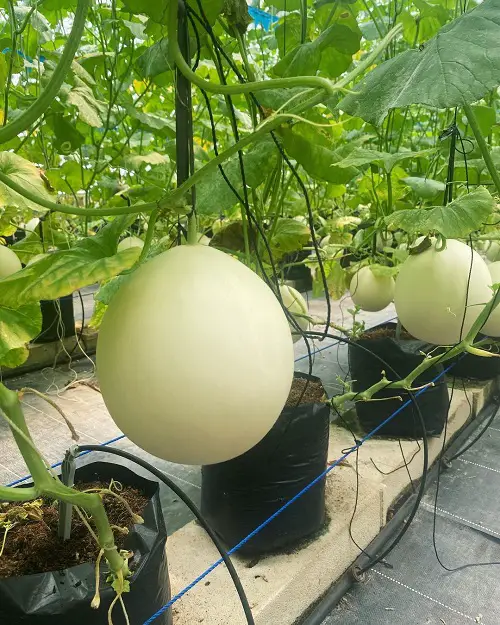
Botanical Name: Cucumis melo
USDA Zones: 4-11
Honeydew Melons are light green or yellow on the outside and have pale green/ white flesh. They are really sweet and refreshing and rich in potassium and fiber.
26. Honey Locust
Botanical Name: Gleditsia triacanthos
USDA Zones: 3-9
The Honey Locust is a lovely fruit that starts with the letter H. It has long, flat pods and is surprisingly sweet and refreshing when ripe–this is also the reason behind its name.
27. Honeysuckle Fruit
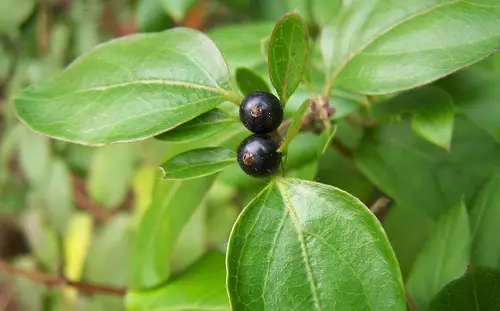
Botanical Name: Lonicera japonica
USDA Zones: 4-10
There are a few varieties of Honeysuckles that have edible berries, like the Honeyberry. But don’t go eating around random ones because many varieties are also poisonous.
28. Horned Melon
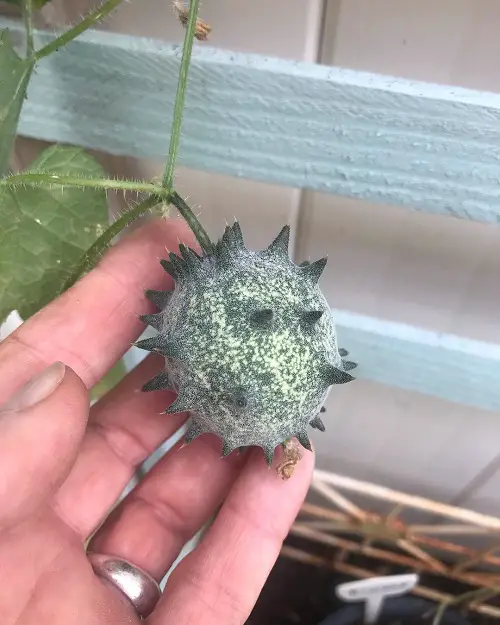
Botanical Name: Cucumis metuliferus
USDA Zones: 10-11
Horned Melons are arguably the best-looking H-name fruits. They have bright orange skin covered in tiny spikes or horns, and their unique flavor is a blend of cucumber, banana, kiwi, and lime.
29. Horse Mango
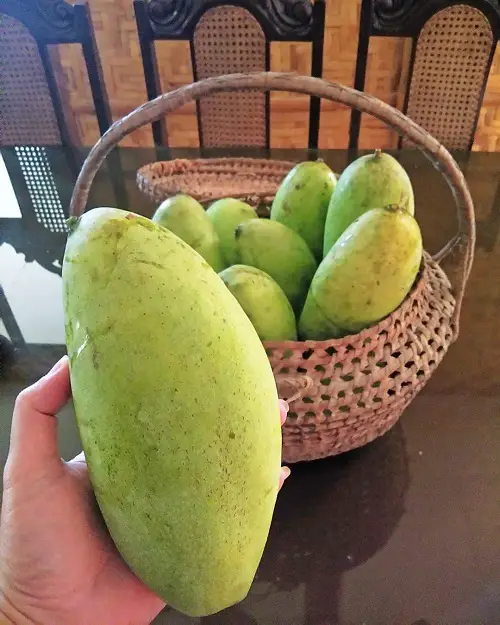
Botanical Name: Mangifera foetida
USDA Zones: 10-11
Horse Mangoes have an oblong shape and have a sour-acidic flavor. It is not eaten raw, but people make chutneys and pickles with it.
30. Hottentot Fig
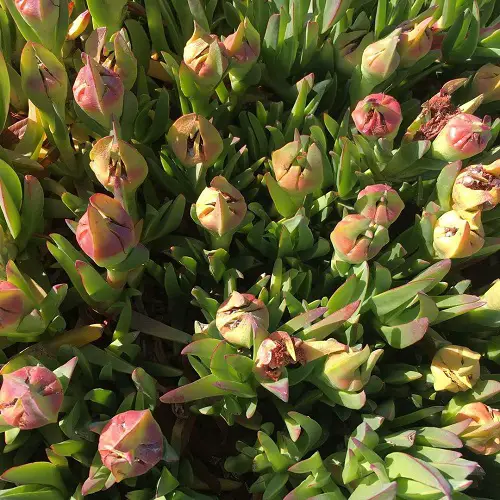
Botanical Name: Carpobrotus edulis
USDA Zones: 9-11
Hottentot Figs are edible, flesh berries that are sweet and tarty. It will remind you of a pear when you eat it because the flavor is similar.
31. Hubbard Squash
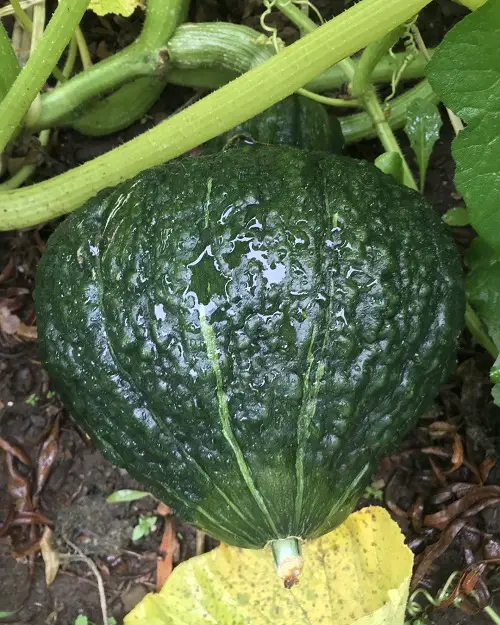
Botanical Name: Cucurbita maxima
USDA Zones: 3-10
Hubbard squash is a winter squash variety with a bumpy and bulbous shape. It is known for its sweet, nutty flavor and deep orange-colored flesh.
32. Huito Fruit
Botanical Name: Genipa americana
USDA Zones: 10-11
Huitos grow on trees that are really tall and easily reach 90-100 feet. The fruit is used for its blue-black pulp pigment that is used for body art and tattoos by the indigenous people.
33. Husk Tomato
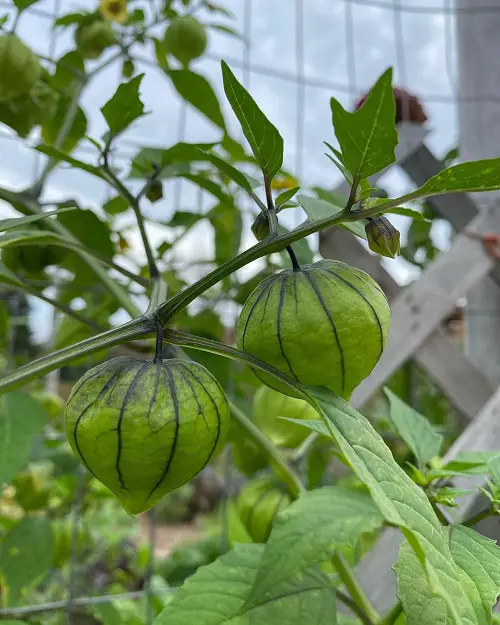
Botanical Name: Physalis pruinosa
USDA Zones: 4-9
Husk Tomatoes are green in color and also have a purple tinge sometimes. They have a tart, acidic taste and are used in salsas, sauces, and stews.
34. Hyuganatsu
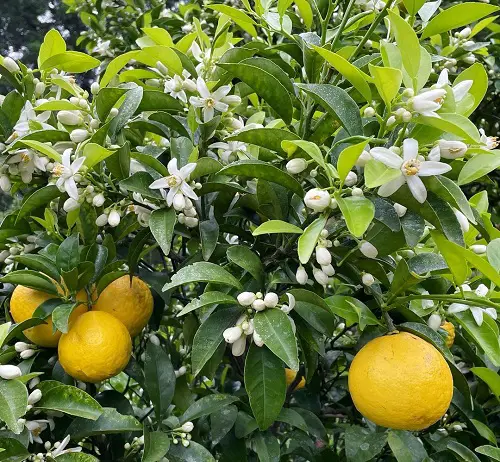
Botanical Name: Citrus tamurana
USDA Zones: 9-11
Hyuganatsu fruits are a Japanese native and are really fragrant citrus fruits. They’re a natural hybrid between Yuzus and Pomelos.


